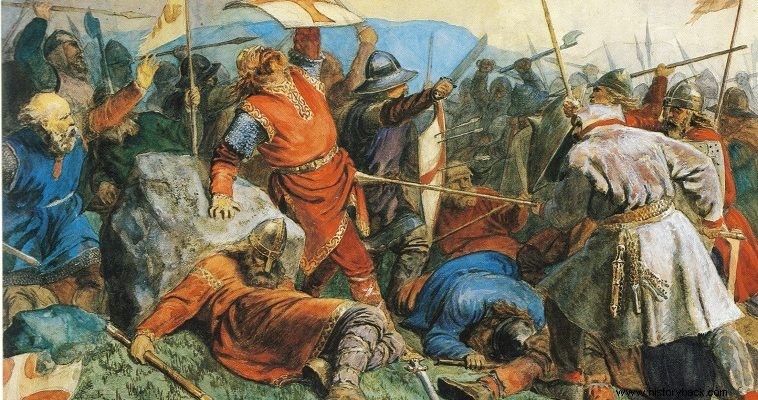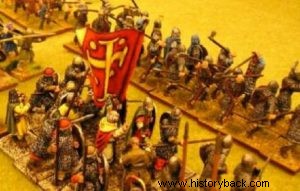
The Byzantine Empire for a long time held possessions in Italy. In 1009 the Lombard ruler of Bari Melis (or Melo), until then a vassal of the empire, revolted. The Byzantines reacted and in 1011 occupied Bari.
However, the defeated Member did not surrender and after being reinforced with Norman mercenaries under Gilberto Boatere, also having the support of the pope , counterattacked and defeated, in 1017, the Byzantines in the battle of the river Fortore.
The emperor Vasilios II Bulgaroktonos immediately replaced the Byzantine commander in Italy by sending Vasilios Voioannis in his place , one of his best generals. Voionannis was also reinforced with a detachment of elite Varangian guards and immediately moved against the opponents.
He met the enemy at the river Ophantus near the region of Cannae, where Hannibal had exterminated the Romans in 216 BC . The details regarding the conduct of the battle are not known... However, we know that the army of Lombards and Normans was literally annihilated.
The Norman chief Gilbert was killed along with most of the men, of whom only 10 knights escaped. Immediately after his victory, Voionannis built a very strong fortress in the passes of the Apennines securing the plain of Apulia.
Then Voioannis captured the castle of his son-in-law and ally Meli Dato in Gariliano. Dato tied himself in a sack and threw himself into the sea. Pope Benedict VIII then asked the German Emperor Henry II for help. The Emperor accepted but was slow to act. Melis who managed to escape and take refuge in the court of the German ruler died there in 1020.
The Germans finally attacked the Byzantine possessions but were repulsed. Boioannis excellently commanded the Byzantine conquests in Italy until his removal in 1027, two years after the death of the great emperor Basil II. His successors were not equal to him and soon the Byzantine presence in Italy was limited.
It is worth noting that Pope Benedict was the one who had crowned Henry emperor and the one who officially added the Filioque (the emanation, according to them of the Holy Spirit and from the Son – Filioque) to the Symbol of Faith of the Roman Catholics after demand of the German emperor.

Representation of Byzantine infantry. Varangians can be seen in the first line.
